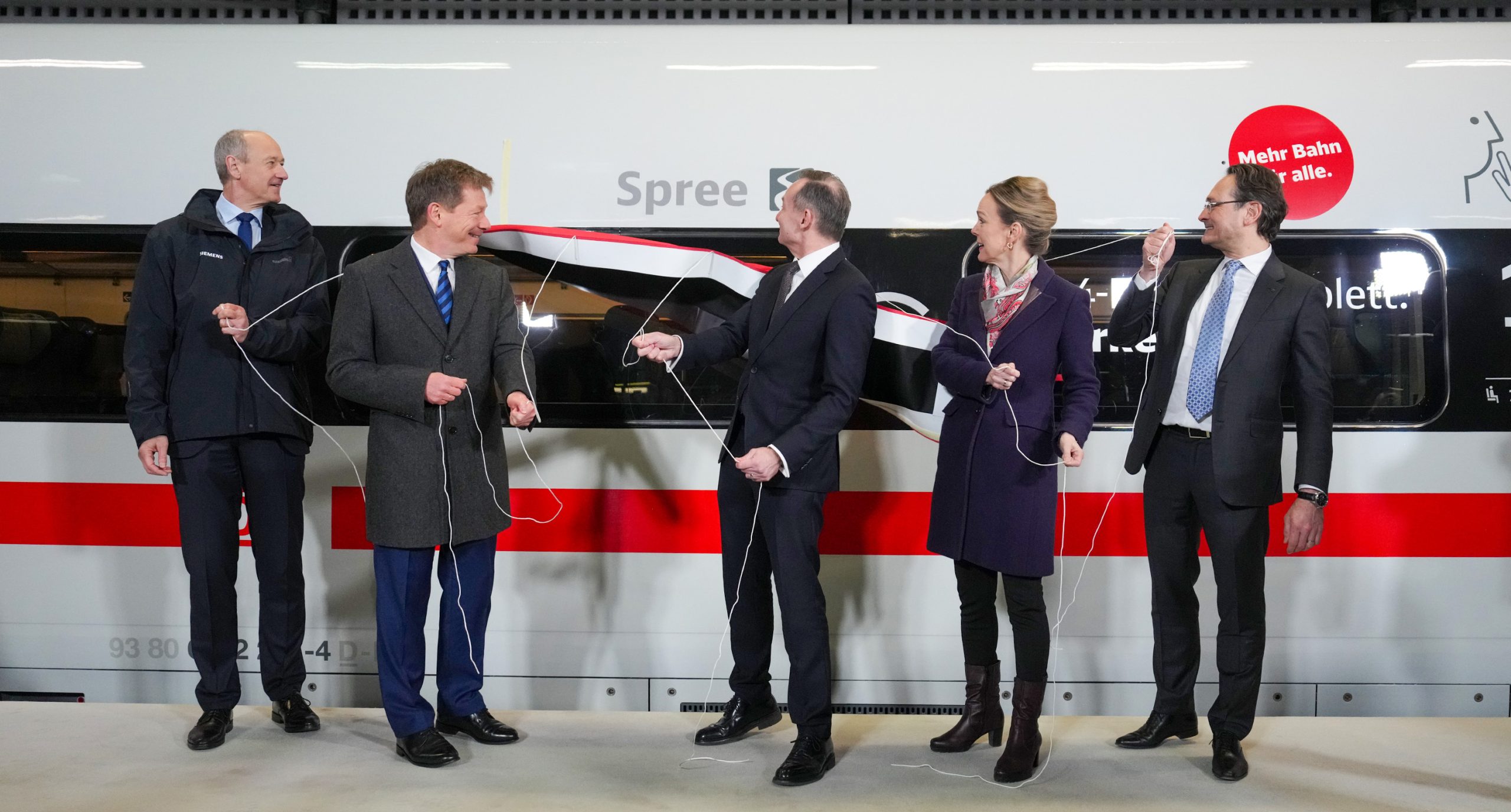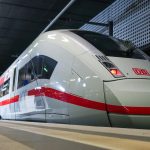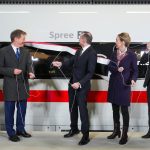 Deutsche Bahn (DB) and Siemens Mobility celebrated the delivery of the 137th seven-car train, forming the entire ICE 4 train fleet. The punctually delivered train was christened “Spree” at the Berlin Central Station, where an official ceremony took place attended by Richard Lutz, CEO of DB, Volker Wissing, Federal Minister for Digital Affairs and Transport, Manja Schreiner, Senator for Mobility, Transport, Climate Protection and the Environment in Berlin, Michael Peterson, DB Member of the Management Board for Long Distance Passenger Transport, and Roland Busch, CEO of Siemens AG.
Deutsche Bahn (DB) and Siemens Mobility celebrated the delivery of the 137th seven-car train, forming the entire ICE 4 train fleet. The punctually delivered train was christened “Spree” at the Berlin Central Station, where an official ceremony took place attended by Richard Lutz, CEO of DB, Volker Wissing, Federal Minister for Digital Affairs and Transport, Manja Schreiner, Senator for Mobility, Transport, Climate Protection and the Environment in Berlin, Michael Peterson, DB Member of the Management Board for Long Distance Passenger Transport, and Roland Busch, CEO of Siemens AG.
Since 2016, Siemens Mobility has delivered the ICE 4 train fleet in three different variants totalling over 1,500 cars with around 105,000 seats. The ceremony marked the completion of the largest procurement programme in DB’s history for which EUR 6 billion is the value of the investment for these trains.
“Siemens and DB have delivered this project right on time. Expansion of the DB fleet is a central lever for achieving the goal of our Strong Rail strategy: doubling the number of travelers using our long-distance rail services,” the CEO of Deutsche Bahn said.
The modernisation of the DB’s rolling stock is a priority for the German government which by 2030 will invest EUR 12 billion for long-distance trains, increasing ICE fleet to 450 trainsets, Volker Wissing said, highlighting that through the investment until 2030 the “average age of ICE and Intercity trains will fall from 18 to 12 years. In combination with the general refurbishment of the network, all the signs point to improvement.”
DB received a total of 137 ICE 4 trains in different variants. In addition to the 37 seven-car trains, there are 50 12-car trains as well as 50 13-car XXL ICE trains in service. The latter offer seating for nearly 1,000 passengers, more than ever before in an ICE and five times more than in medium-haul aircraft. These long trains run on routes that are particularly in demand, such as from Hamburg via North Rhine-Westphalia and via the Rhine/Main high-speed line to southern Germany. Like the other 7-car trains, the ICE “Spree” will primarily operate between Berlin and North Rhine-Westphalia as well as between Frankfurt am Main, Munich, Salzburg, and Klagenfurt.
“As the longest train in the ICE fleet, the ICE 4 has around 25% more seats. And since it is lighter and more aerodynamic, it uses 30% less energy than previous models. Over its lifetime, each train replaces 20,000 cars and saves up to 400,000 tons of CO2. Every ICE in service is good for the climate, for mobility, and for Germany’s position as a location for industry and business,” Roland Busch said.
DB now has the most modern and, with over 400 trains, the largest ICE fleet of all time. DB will also be taking delivery of another ICE train every three weeks in 2024. By heavily investing in the modernization of its fleet and the purchase of new trains, DB is continuing to drive its strategy for ensuring a strong rail system in Germany. DB initiated this strategy in 2019 and has consistently implemented it ever since – despite facing adverse circumstances such as the COVID-19 pandemic, the war in Ukraine, and the energy crisis – with the clear goal of achieving the German government’s transport sector targets.
Share on:








